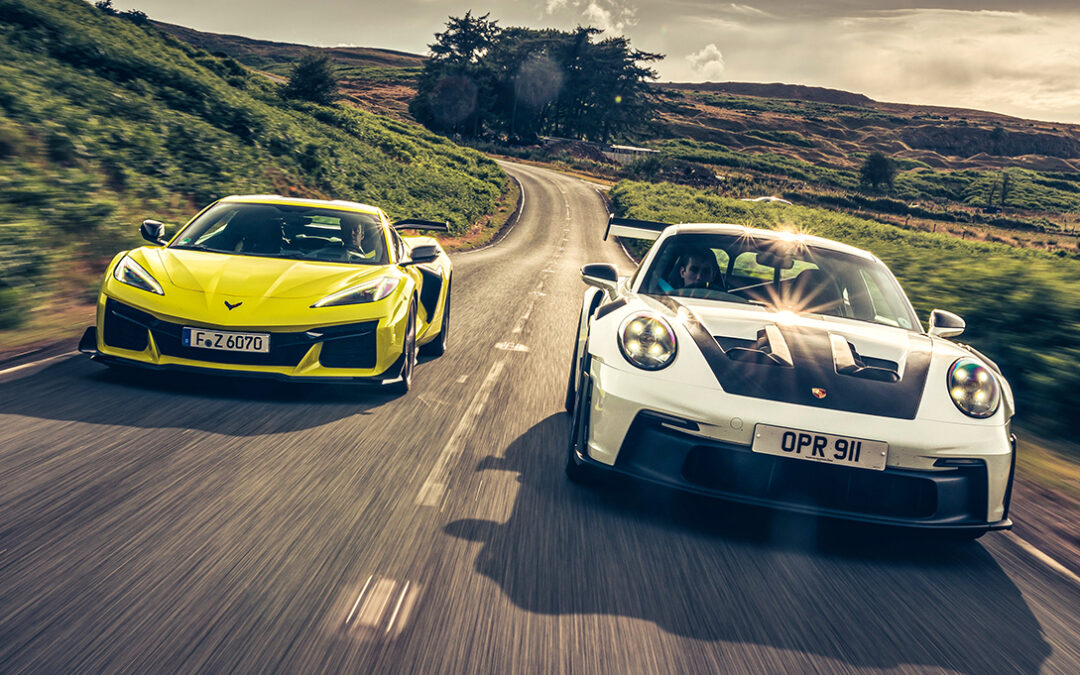USA vs EUROPE
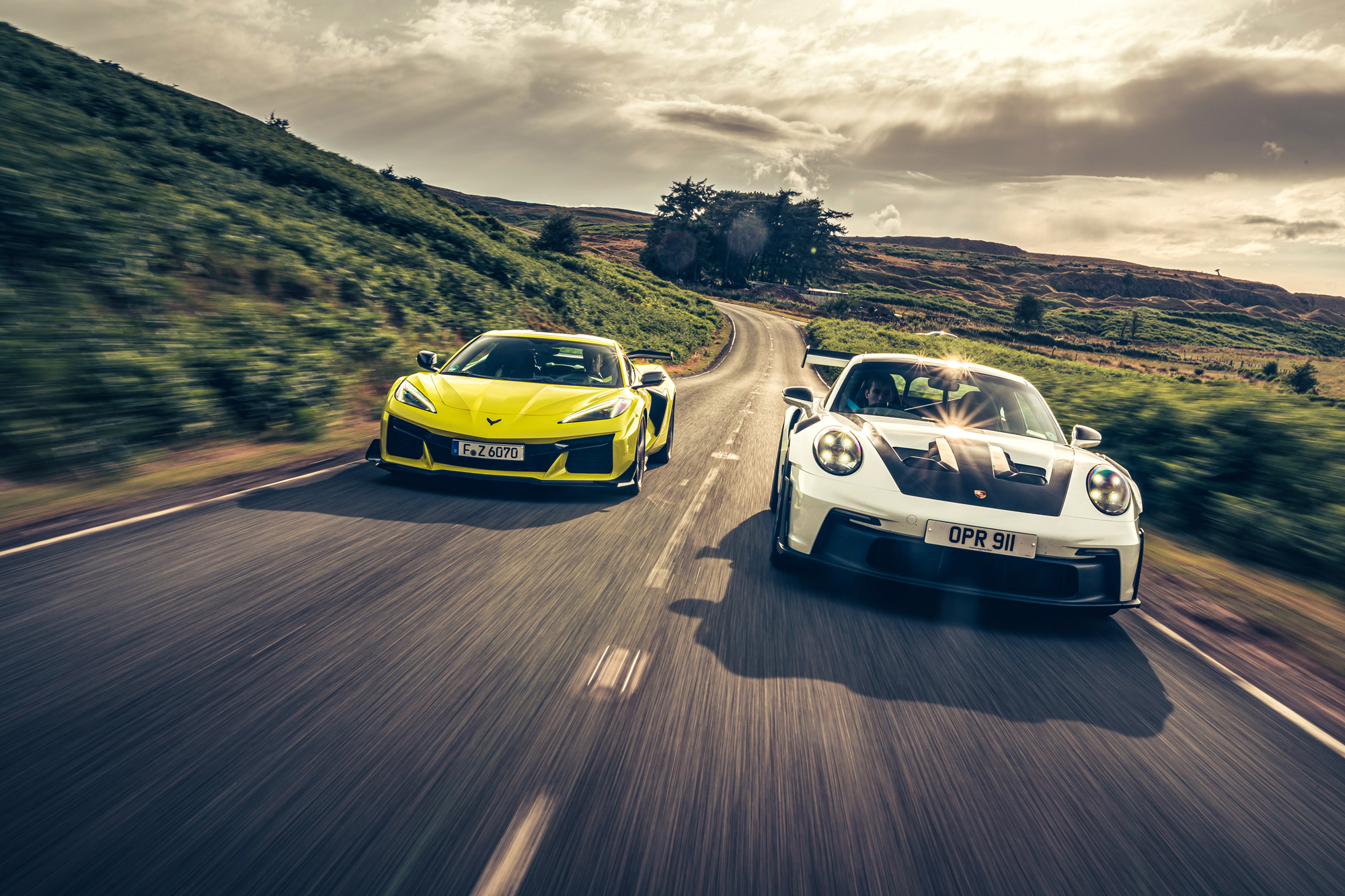
USA vs Europe: whose cars are best?
Cars are becoming more alike wherever they’re made. But have American manufacturers really caught up with Europe’s finest? We adjudicate in five key battlezones
Rising sea levels are pushing Europe and America fractionally further apart with each passing year. But their cars – some of whose engines are adding to that water – are closer in concept and philosophy than ever. American tin has never been so good; nor has it ever been so appealing to drivers outside of America. But it’s still Europe that’s out on top, still Europe moving the needle… isn’t it?
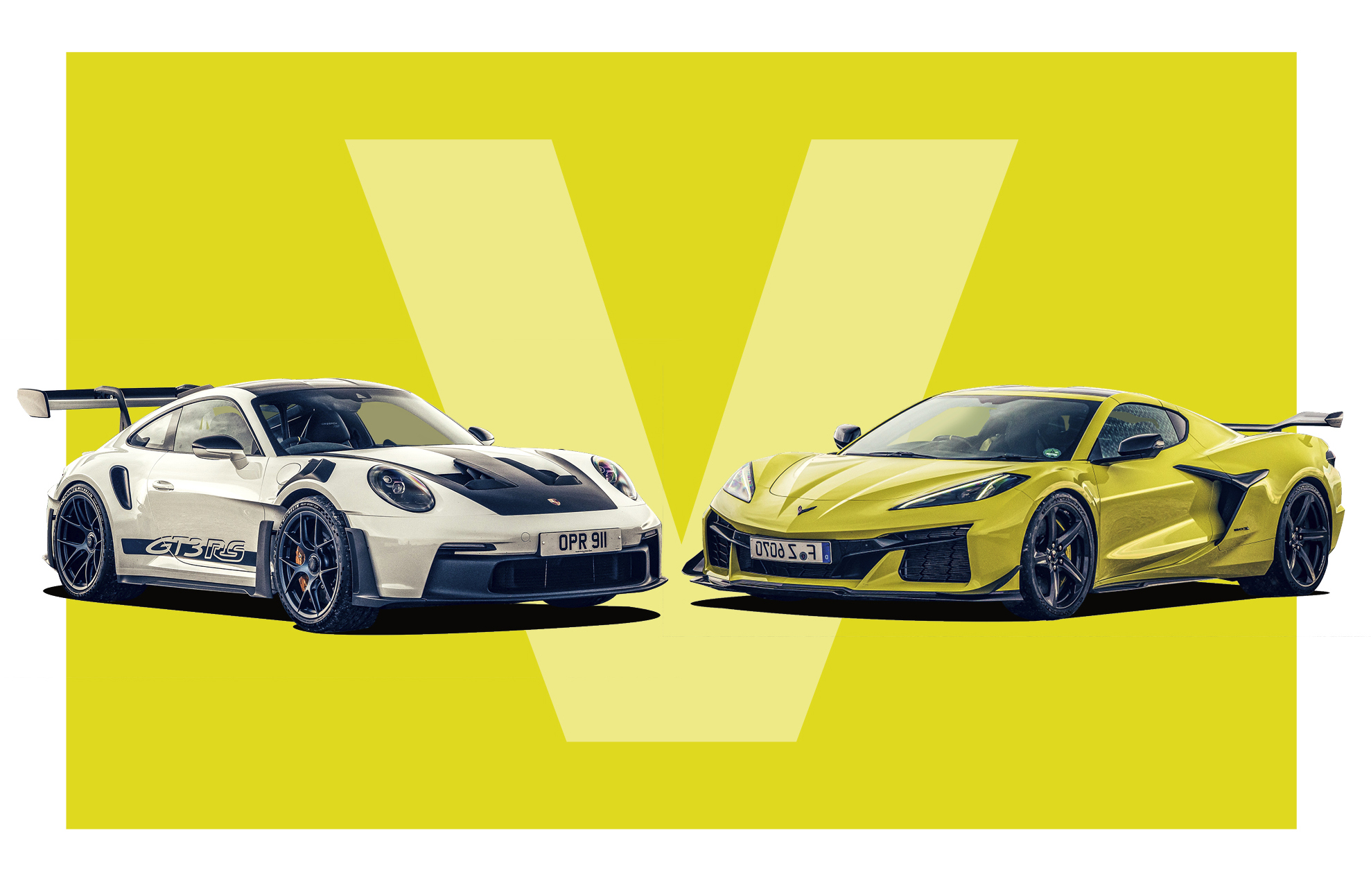
Porsche 911 GT3 RS vs Corvette Z06
Moving the needle all the way to 9000rpm in the case of Porsche’s 911 GT3 RS, whose 4.0-litre flat-six spins even harder and higher than the 5.5-litre V8 in the Corvette Z06. The 670bhp Z06 winds to 8600rpm, a one-night-only show in any other Corvette from the model’s 70-year back catalogue, and throws shade on the 518bhp 911 in a straight fight from the lights.
But straight lines are just the thumb-twiddling bits of asphalt between corners. And as soon as the 911 vectors away from the straight-ahead on one of those, the steering feel, grip and racetrack-spec aero help make some sense of the 80 per cent price premium.
Sales and our own personal seat-time confirm that going mid-engined – more than half a century after first teasing the idea – has been great for the Vette, and might get even greater with the new 1064bhp ZR1. But the GT3 RS reminds us of the value in sticking with what you know. And Porsche has been refining this mega-Beetle concept for six decades.
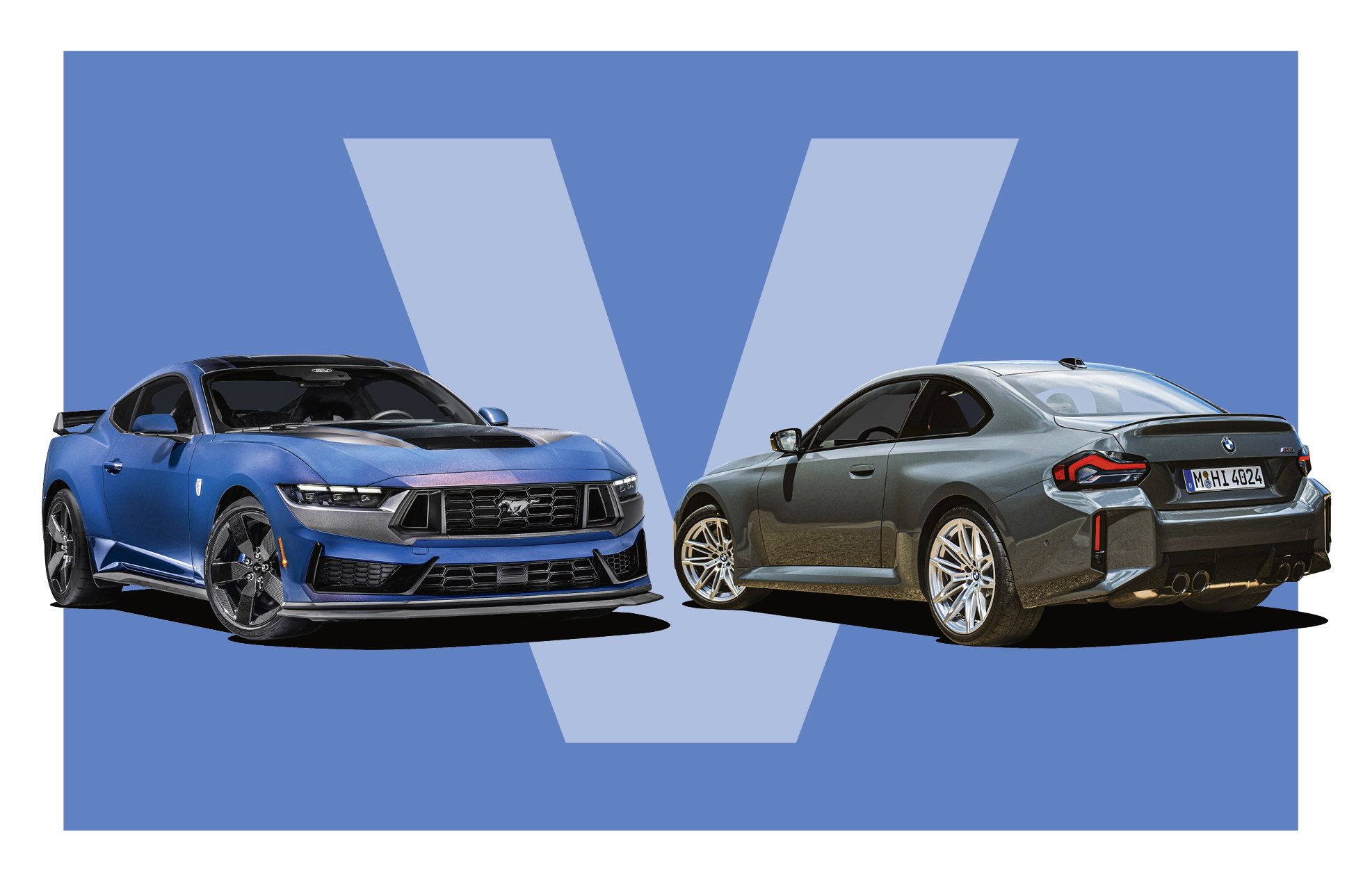
Ford Mustang Dark Horse vs BMW M2
Ford has been honing its Mustang for just as long, but even with all that practice, in top-spec Dark Horse form the current pony has to give second best to Europe’s take on the same thing. Don’t get us wrong, we really like the Dark Horse, even if we liked it a lot less when when tried one back on UK soil, where tighter European emissions regulations and a gasoline particulate filter rob some of the rumble as well as 40bhp from the 500 total available to US buyers.
Whatever form its 5.0-litre Coyote V8 takes, the Dark Horse delivers driving satisfaction in a way the regular V8 GT can’t quite manage, thanks to a speedier steering ratio and smart MagneRide adaptive dampers with a bespoke tune.
But the death of its natural Chevrolet Camaro and Dodge Challenger rivals, combined with a price that’s almost half as much again as a base GT’s, throws it into direct competition with BMW’s M2, which costs fractionally less. And that’s a problem. More of a problem than the M2’s hideous front-end design or the fact that its turbocharged inline-six sounds about as exciting as an EV compared with a trip to Mustang’s surprisingly generous 7200rpm danger zone.
Because while a run in the Dark Horse leaves you impressed but still trying to rationalise the additional outlay over the Mustang GT, doing the same in the M2 has you wondering why BMW isn’t asking more. Instead of the Dark Horse’s 10 extra horses over the GT, the M2 gives you 85bhp over the next model down the 2-series ladder, the M240i. It outperforms the Mustang whatever shape the road is and however you want to drive it. Wanna go fast? The M2 is faster, and makes it easy for you to unlock that pace. Wanna cruise? The M2 is more mechanically refined, easier to see out of and feels more premium.
The Mustang scores some micro wins on the way to its points loss. The noise we’ve mentioned, the steering feel we haven’t, but ought to. But unlike the Corvette and GT3, which are cars to be enjoyed in brief bursts, machines like the Mustang and M2 need to be well-rounded. They can’t expect one great trait to make up for several lousy ones.
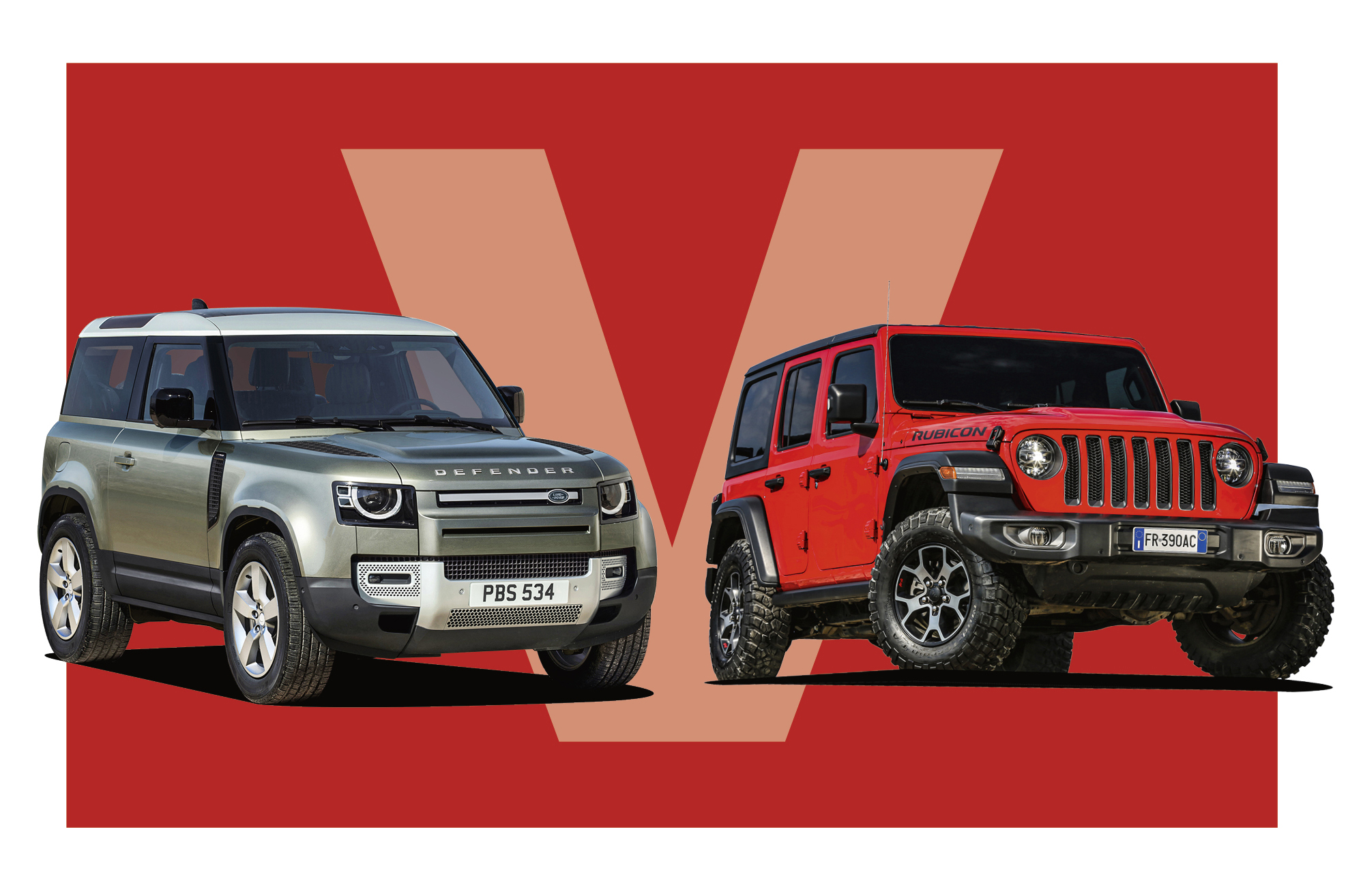
Land Rover Defender vs Jeep Wrangler
Talking of one-trick horses… that’s the reason Land Rover’s Defender gets our vote over Jeep’s Wrangler every time.
The name plates have been duking it out since the 1940s, but one of the cars feels like it’s still there. We’re not questioning the Wrangler’s chops when the view forward turns post-apocalyptic, or its ability to visually relay that to buyers and indeed anyone else on the road. The Jeep looks like we used to expect SUVs to look, but it unfortunately also drives like it’s stuck in a timewarp.
True, for some buyers that’s as much a part of the perverse appeal as kneeing yourself in the face trying to climb into a Seven with the roof up is to Caterham owners. But other SUVs have moved on. The Defender has moved on (even Caterham is trying to move on, for heaven’s sake). And reasonable-minded buyers have gone with them.
Only the most hardcore Jeep fan could ever call the Defender’s off-road abilities into question. And even they would stop sneering at its unibody construction after experiencing how much better that makes the steering, ride and body control on the sealed roads the machines will spend 95 percent of their time driving.
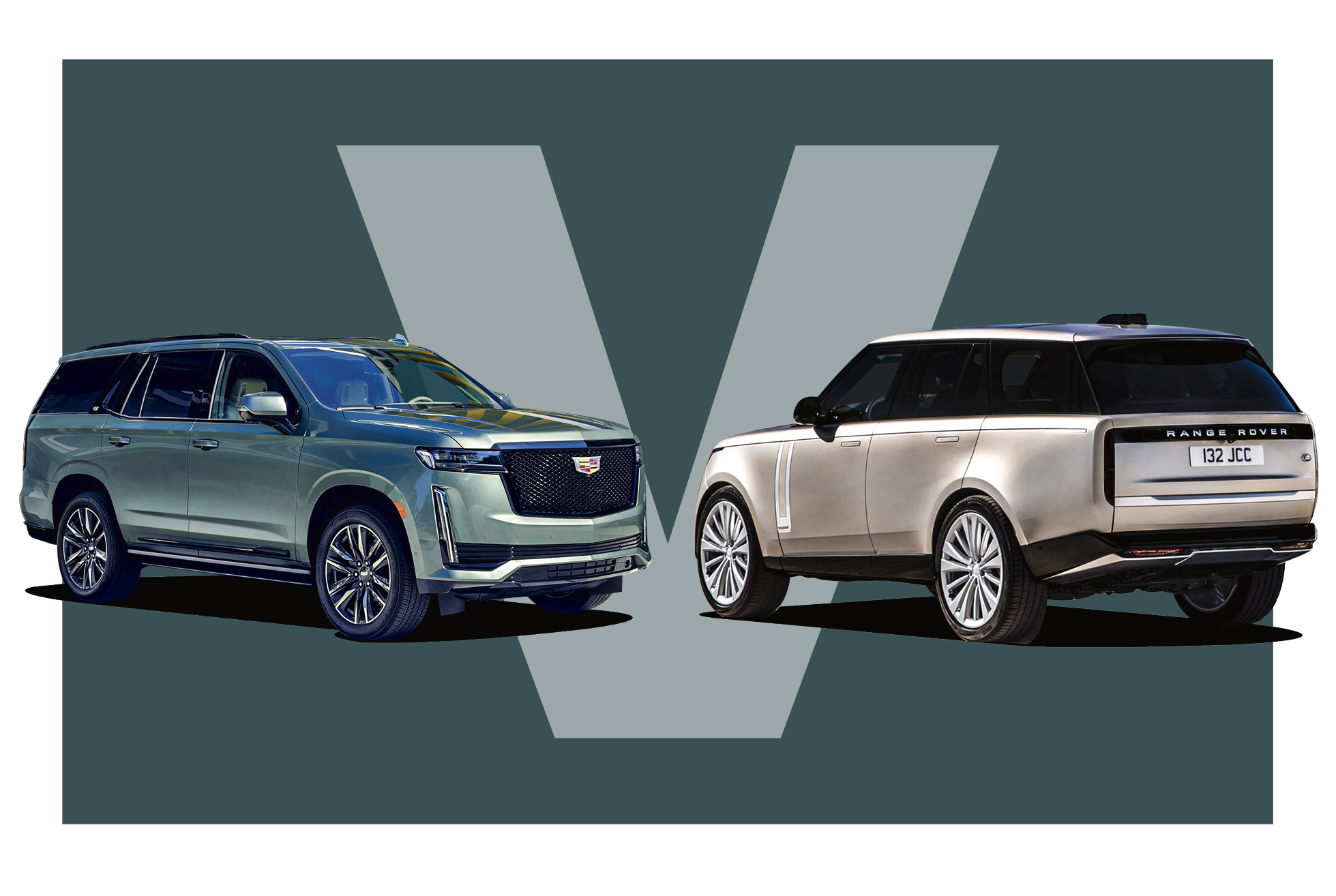
Cadillac Escalade vs Range Rover
For much the same reason we’d take the full-size Range Rover, or a BMW X7 for that matter, over Cadillac’s Escalade, even if we did have sufficient sealed-surface real estate to make sense of the Caddy’s size. Underneath the glitzy luxury trim and clever Super Cruise hands-free tech it’s an old-school truck-based body-on-frame dinosaur, sharing DNA with utilitarian machines like the Chevy Silverado pick-up. It’d be like Mercedes trying to make a GLS out of a Unimog.

Cadillac CT5-V Blackwing vs BMW M5
And where’s Caddy in the saloon-car battle? Way down the pecking order, that’s where. True, traditional four-door sales are shrinking as buyers increasingly move towards SUVs, but BMW, Audi and Mercedes still think there are plenty of drivers who like to fly closer to the ground, and in the CT4 and CT5 Cadillac isn’t giving those buyers much to get excited about.
The exception is the CT5-V Blackwing, GM’s answer to the M5, and available with a manual transmission that BMW’s super saloon has no answer for. But that’s on borrowed time, soon to be wiped out in the move to electrification, the one area in which America, primarily through Tesla, could claim to lead the field. Or at least it could three years ago. Now its ageing line-up – and yes we’re including the barely-facelifted Model 3 in that diss – looks increasingly at risk from European and global rivals. The fact that BMW’s EV sales in Europe have overtaken Tesla’s is a sign that it’s not just on the old battlefields that the Old World knows best.

